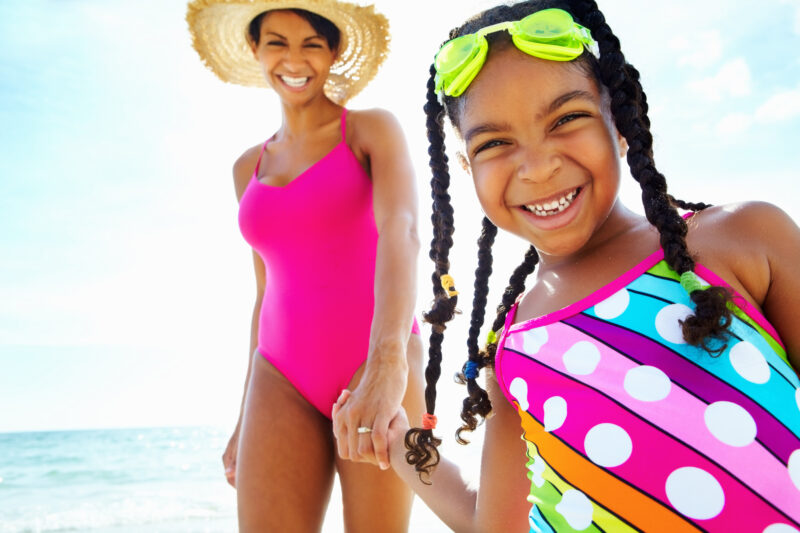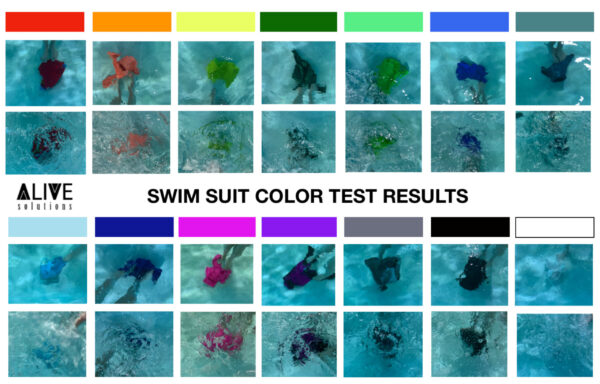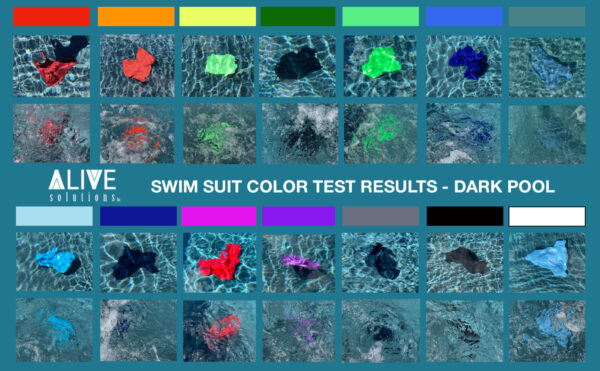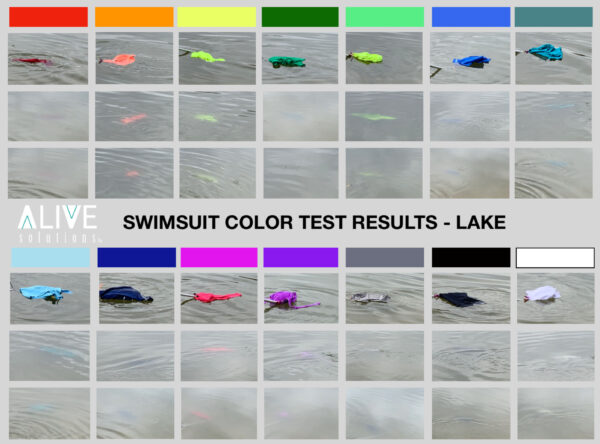
Believe it or not, when shopping for swimsuits for your children, color — not style, design or your kids’ favorite Disney icons — is of the utmost importance. The color and visibility of your children’s swimsuits underwater could actually save their lives!
Drowning is the leading cause of death for children ages 1 to 4 years old and the second-leading cause of injury death for children ages 5 to 9 years.
Drowning is quick and silent — unlike what you see in the movies. Children bob up and down just at the surface trying to get air; they are not splashing around yelling for help. Just below the surface, some swimsuit colors can actually look like a cluster of leaves or debris, and not a struggling child. Other colors can virtually disappear in water.
Fortunately, by taking a few precautions, drowning also is one of the most preventable childhood injuries. So before purchasing your kids’ swimsuits for the season, check out this color visibility test.
Alive Solutions, a company specializing in aquatic safety, training and risk assessment, put 14 swimsuits in a wide variety of colors to the test in a swimming pool and then in a lake to find out which colors were most visible in water. The images below represent the findings.

In pools with light and dark bottoms, the top images show swimsuits submerged. The second row of images shows them about 18 inches below the surface with water agitation.

In lakes, the first row of images show swimsuits on the surface, the second row shows a shore-level perspective and the third row were taken from a slightly elevated perspective.

So, which swimsuit colors were the most visible?
Just like brightly colored outfits can help you find your child in a crowd, test results proved bright, neon colors, including bright orange, yellow and green, were crucial in spotting a child in a body of water.
Popular swimsuit colors, such as blues and greens, almost completely disappeared. The biggest losers were white and light blue.
Test results also showed:
- In lakes, white appeared to be a light reflection or clouds on the surface and didn’t stand out.
- In pools with a dark bottom, white looked light blue and was easy to see close up, but the farther away you moved the quicker it disappeared.
- Dark colors or matching colors to the water disappeared quickly in pools with a dark bottom.
- Dark colors showed up better on pools with light bottoms, but they can often be dismissed for a pile of leaves, dirt or a shadow.
- Neon pink performed well in pools, but not in lakes.
Swimsuit color alone is not enough. Know these water safety basics.
Remember, bright and contrasting colors can help visibility, but it doesn’t matter what color your kids are wearing if you aren’t actively watching and supervising effectively.
To help avoid accidents and injuries this summer, Akron Children’s offers 2 basic rules when kids are near any swimming hole:
Never leave a child unattended in or near water
The number one thing you can do to keep your children safe around water is to stay close and keep your eyes on them at all times. Assign yourself or another adult as the “designated watcher” who will closely monitor your child in or near water — and stay free of distractions like cell phone use.
Teach children how to swim
In addition, it’s important to teach your children to swim. Kids at any age can take swimming lessons. Children over 4 years old should learn the basics of swimming, like floating and treading water. Younger children should learn about safety and will start to feel more familiar in the water.
Learn more about water safety and Akron YMCA’s Safety Around Water Program, a partnership with Akron Children’s.










